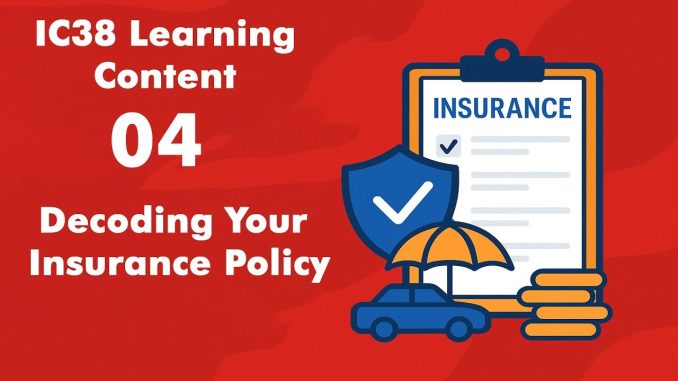
Reading an insurance policy can feel like trying to decipher a foreign language. Between the dense legal jargon, the fine print, and the maze of exclusions and endorsements, it’s no wonder many policyholders feel overwhelmed. Yet understanding your insurance policy is essential—not just to know what you’re paying for, but to ensure you’re adequately protected when life throws a curveball. Whether it’s a homeowners, auto, health, or business policy, decoding the document is a skill that can save you time, money, and stress.
At its core, an insurance policy is a contract. Like any contract, it outlines the responsibilities of both parties: the insurer and the insured. The insurer agrees to provide financial protection against specific risks, and in return, the insured agrees to pay a premium. But the devil, as they say, is in the details. The first step in decoding your policy is to understand its structure. Most policies follow a fairly standard format, beginning with a declarations page, followed by definitions, coverage sections, exclusions, conditions, and endorsements. Each section plays a distinct role in shaping the scope and limitations of your coverage.
The declarations page is essentially the policy’s snapshot. It lists the basics: your name, the policy period, the type of coverage, limits, deductibles, and the premium. Think of it as the executive summary. If you’re short on time, this is the section to skim first. For example, if you’re reviewing your auto insurance, the declarations page will tell you how much liability coverage you have, whether you’ve opted for collision or comprehensive coverage, and what your deductibles are. It’s also where you’ll find the names of any additional insured parties, such as a lienholder or co-owner.
Next comes the definitions section, which may seem tedious but is crucial for understanding the rest of the policy. Insurance contracts often use terms that have very specific meanings, and those meanings may differ from everyday usage. For instance, the word “accident” might be defined in a way that excludes certain events you would normally consider accidental. By familiarizing yourself with these definitions, you can avoid misinterpretations that could lead to denied claims or unmet expectations.
The heart of the policy lies in the coverage sections. This is where the insurer spells out what is covered and under what circumstances. For example, in a homeowners policy, the coverage section will detail protection for your dwelling, personal property, liability, and additional living expenses. It’s important to read these sections carefully and consider how they apply to your specific situation. If you run a home-based business, for instance, you might be surprised to learn that your standard homeowners policy doesn’t cover business-related equipment or liability. In such cases, you may need to purchase additional coverage or a separate policy altogether.
Equally important are the exclusions. These are the “gotchas” that limit or eliminate coverage for certain risks. Common exclusions in property insurance include damage from floods, earthquakes, or acts of war. In health insurance, exclusions might involve cosmetic procedures or experimental treatments. Understanding what’s not covered is just as critical as knowing what is. It helps you identify potential gaps in your protection and make informed decisions about supplemental insurance.
The conditions section outlines the rules you must follow to keep your coverage in force and to file a claim successfully. This might include requirements to report a loss promptly, cooperate with the insurer’s investigation, or maintain certain safety measures. Failure to comply with these conditions can result in a denial of coverage, even if the loss itself would have otherwise been covered. For example, if your auto policy requires you to notify the insurer within 24 hours of an accident and you wait a week, you could jeopardize your claim.
Endorsements, sometimes called riders, are amendments to the standard policy. They can either add, modify, or restrict coverage. These are often tailored to your specific needs and can significantly alter the scope of your protection. For instance, you might add an endorsement to your homeowners policy to cover valuable jewelry or fine art that exceeds the standard limits. Or you might have a business policy with a cyber liability endorsement to protect against data breaches. Always review endorsements carefully, as they can override other parts of the policy.
One of the most effective ways to decode your policy is to walk through a hypothetical claim scenario. Imagine your house suffers water damage from a burst pipe. Would your policy cover the repairs? What about the cost of staying in a hotel while your home is being fixed? Would mold remediation be included? By applying the policy language to real-world situations, you can better understand how your coverage works—or doesn’t. If you find yourself unsure, don’t hesitate to ask your insurance agent or broker for clarification. A good agent should be able to explain the policy in plain language and help you assess whether it meets your needs.
It’s also worth noting that insurance policies are living documents. They can and do change over time, especially at renewal. Insurers may adjust coverage terms, premiums, or exclusions based on changes in risk, regulations, or market conditions. That’s why it’s important to review your policy annually, not just when you first purchase it. Life changes—like buying a new car, renovating your home, or starting a business—can all affect your insurance needs. Staying proactive ensures that your coverage evolves with you.
Ultimately, decoding your insurance policy isn’t about becoming an expert in legalese. It’s about empowering yourself to make informed decisions and avoid unpleasant surprises. With a bit of patience and curiosity, you can turn that intimidating stack of paper into a valuable tool for financial security. And in a world where uncertainty is the only certainty, that’s a skill well worth having.